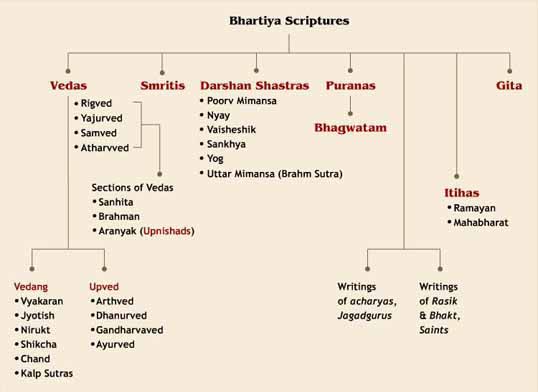

The Vedas are a collection of hymns and other religious texts composed in India about 1500 and 1000 BCE. It includes elements such as liturgical material as well as mythological accounts, poems, prayers, and formulas considered to be sacred by the Vedic religion.
The origin of the Vedas can be traced back as far as 1500 BCE, when a large group of nomads called the Aryans, coming from central Asia, crossed the Hindu Kush Mountains, migrating into the Indian subcontinent. This was a large migration and used to be seen as an invasion. This invasion hypothesis, however, is not unanimously accepted by scholars today. All we know for certain, mainly through linguistic studies, is that the Aryan language gained ascendency over the local languages in the Indian sub-continent. The language of the Vedas is Sanskrit, an ancestor of most of the modern languages spoken today in South Asia.
The Rig-Veda is the largest and most important text of the Vedic collection; it includes 1028 hymns and it is divided into ten books called mandalas. It is a difficult text, written in a very obscure style and filled with metaphors and allusions that are hard to understand for a modern reader.
The Sama-Veda has verses that are almost entirely from the Rig-Veda, but are arranged in a different way since they are meant to be chanted.
The Yajur-Veda is divided into the White and Black and contains explanatory prose commentaries on how to perform religious rituals and sacrifices.
The Atharva-Veda contains charms and magical incantations and has a more folkloristic style.
The Vedas present a multitude of gods, most of them related to natural forces such as storms, fire, and wind. As part of its mythology, Vedic texts contain multiple creation stories, most of them inconsistent with each other.
Some elements of the religion practised by the natives of India before Vedic times still persist in the Vedas. The Pre-Vedic religion, the oldest known religion of India, which was found in India before the Aryan migrations, was apparently an animistic and totemic worship of many spirits dwelling in stones, animals, trees, rivers, mountains, and stars. Some of these spirits were good, others were evil, and great magic skill was the only way to control them. Traces of this old religion are still present in the Vedas. In the Atharva-Veda, for example, there are spells to obtain children, to avoid abortion, to prolong life, to ward off evil, to woo sleep, and to harm or destroy enemies.
